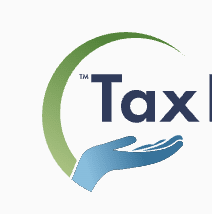
Legally reducing your taxable income requires some preplanning to maximize deductions and utilize all available credits.
However, putting in some work upfront can lead to significant savings. Our best tax relief companies can provide additional support to help you navigate challenging tax burdens.
Key Insights
- Maximize contributions to retirement accounts to lower taxable income for the year of the contribution.
- Use Health Savings Accounts (HSAs) for their tax deduction today and tax-free growth and distributions in the future.
- Plan the timing of your income and deductions to maximize tax benefits on your return.
- Use investment strategies like tax-loss harvesting and optimizing holding periods to minimize taxes.

Maximize Retirement Account Contributions
Contributions to retirement accounts, such as individual retirement accounts (IRAs) and 401(k) plans, are some of the best ways to reduce taxable income and improve your financial future.
Investors over 50 can take advantage of special catch-up contributions in IRAs, 401(k) plans, and 403(b) plans to supercharge their tax benefits and savings.
Contributions to traditional IRAs or employer-sponsored plans like 401(k)s, Sep IRAs, and 403(b)s reduce your taxable income by the full amount in the contribution year.
Roth IRAs and Roth options of other retirement accounts don't reduce your taxable income in the year of the contribution but allow you to take tax-free withdrawals in retirement.
The contribution limits for 2025 are:
| Account Type | Contribution Limits | Catch-Up Contribution: 50+ |
|---|---|---|
| Immediately Deductible Accounts | ||
| Traditional IRA | $7,000 | $1,000 |
| 401(k), 403(b), SOLO 401(k) | $23,500 | $7,500 |
| SEP IRA | Lesser of 25% of compensation or $70,000 | Not applicable |
| Tax-free Withdrawal Accounts | ||
| Roth IRA | $7,000 | $1,000 |
Health Savings Accounts: The Triple Tax Advantage
Health Savings Accounts or HSAs available to participants of high deductible health plans (HDHP) are a unique and powerful way to save money on taxes. These accounts, often called "triple tax-advantaged," benefit participants in three ways:
- Tax-deductible contributions in the year you make them
- Tax-free growth on all earnings within the account
- Tax-free withdrawals for qualified medical expenses at any time
HSA contribution limits vary based on whether it's individual or family coverage. Individual coverage limits for 2025 are $4,300, and family coverage limits are $8,550—also, catch-up contributions of $1000 for individuals 55 and older.
Unlike flexible savings accounts and other health savings vehicles, HSAs don't have "use it or lose it" rules. HSA account holders may roll over their HSA from year to year and continue to grow their earnings tax-free.
With the right strategy, an HSA can double as a retirement vehicle. While medical insurance premiums aren't typically eligible expenses, Medicare and long-term care premiums are exceptions. After 65, you can use HSA funds for any purpose, paying taxes on withdrawals as you would on a 401(k) or traditional IRA withdrawal.
Strategic Timing of Income and Deductions
To reduce your tax burden in 2025, you can use strategic timing of income and deductions to optimize your savings. Common examples include:
1. Deferring Income
If you expect to be in a lower tax bracket next year, pushing some income from 2025 to 2026 can save you money. This works for:
- Salary and bonuses (coordinate with your employer before year-end)
- Freelance payments (send invoices after January 1st)
- Investment gains (delay selling appreciated assets)
Keep in mind that you must arrange the deferral before the income is available to you.
2. Accelerating Deductions
Bringing tax-deductible expenses into the current year can offset this year's income. Here's what to consider:
- Paying January's mortgage payment in December
- Prepaying medical expenses you know are coming
- Making charitable donations before December 31st
3. Bunching Deductions
This strategy involves grouping multiple years of deductions into a single tax year. For example, making two or three years' worth of charitable donations in one year might push your itemized deductions well above the standard deduction threshold, saving you more than spreading those donations across multiple years.
Investment Strategies to Minimize Taxes
Tax-efficient investment strategies are one way to reduce your tax liability.
- Tax loss harvesting: When investments underperform, use this to your advantage by selling positions at a loss to offset capital gains on your winners. This approach directly reduces taxable investment income while maintaining your overall investment strategy.
- Capital gains management: Investments sold within a year are taxed as ordinary income (10–37% based on your adjusted gross income or AGI). Holding investments for over a year qualifies for long-term capital gains rates, which are 0%, 15% or 20% for most investors, depending on taxable income.
- Dividend tax considerations: Be aware of dividend classification differences. Ordinary dividends are taxed as regular income, while qualified dividends receive preferential capital gains rates. For qualified status, dividends must come from US companies or qualified foreign corporations on major exchanges and you must hold the investment for at least 60 of the surrounding 121 days.
Family-Related Tax Reduction Strategies
The IRS offers families some credits and deductions, which can reduce tax liabilities when incorporated with other tax strategies.
- Child Tax Credit: Families can claim up to $2,200 per qualifying child for tax years beginning in 2025. Be aware that only $1,700 of this amount is refundable, meaning you can receive it even if it exceeds your tax liability.
- Child and Dependent Care Credit: If you pay for childcare while working or looking for work, you may qualify for this valuable credit. The credit ranges from 20% to 35% of qualifying expenses—up to $3,000 for one child or $6,000 for two or more children.
- Education credits and deductions: You can offset education costs through three key benefits: the American Opportunity Credit (up to $2,500 per eligible student), the Lifetime Learning Credit (up to $2,000 per tax return), or student loan interest deduction (up to $2,500) for interest paid on qualified loans.
- Income shifting: This strategy involves legally transferring income to family members in lower tax brackets. Options include employing children in a family business or using UGMA/UTMA accounts to transfer investment income to children while maintaining control of assets until they reach adulthood.
Business Owners' Tax Reduction Opportunities
Strategic business owners have several tax-saving options to reduce their tax liabilities:
- Business expense deductions: You may deduct ordinary and necessary expenses for business operations. Examples include office supplies, salaries, and utilities.
- Home office deduction: You may qualify for a home office deduction if there's a portion of your home that you use regularly and exclusively for your business.
- Vehicle and travel expenses: Qualified business-related vehicle and travel expenses are deductible, but only if you maintain detailed records.
- Qualified Business Income Deduction: Eligible taxpayers may deduct up to 20% of their qualified business income from businesses operated as a sole proprietorship, partnership, S corporation, or some trusts.
Charitable Giving Strategies for Tax Benefits
Strategic charitable donations allow you to support causes you care about while simultaneously reducing your tax burden. Here's how:
- Direct cash contributions: The most straightforward approach allows you to deduct cash donations to qualified organizations up to 60% of your adjusted gross income. Remember to always get proper documentation, especially for contributions over $250.
- Donor-advised funds: These flexible giving accounts let you make a large contribution in one tax year—getting an immediate deduction—while distributing the actual donations to charities over several years. This bunching strategy helps maximize deductions, particularly in high-income years or when itemizing deductions.
- Qualified charitable distributions: IRA owners aged 70½ or older can donate up to $108,000 annually directly from their IRAs to qualified charities. These distributions satisfy required minimum distribution requirements while excluding the amount from taxable income.
- Donating appreciated assets: Rather than selling investments that have gained value and then donating cash, transfer the assets directly to charity. This eliminates capital gains tax you would otherwise pay while still allowing you to deduct the full market value of the donation (for assets held longer than one year).
Need a professional hand reducing your taxable income?
Bottom Line
Smart tax planning and knowing your available options are key to reducing what you owe. Understand how state taxes work, state tax debt relief, and make sure you're on top of any other debts. While anyone can cut their taxable income through retirement accounts, more complex strategies like bunching charitable donations, tax-loss harvesting, or shifting income may require help from our recommended tax relief services.
Planning ahead with these tools and strategies is your best path to lower tax bills and greater financial success.




